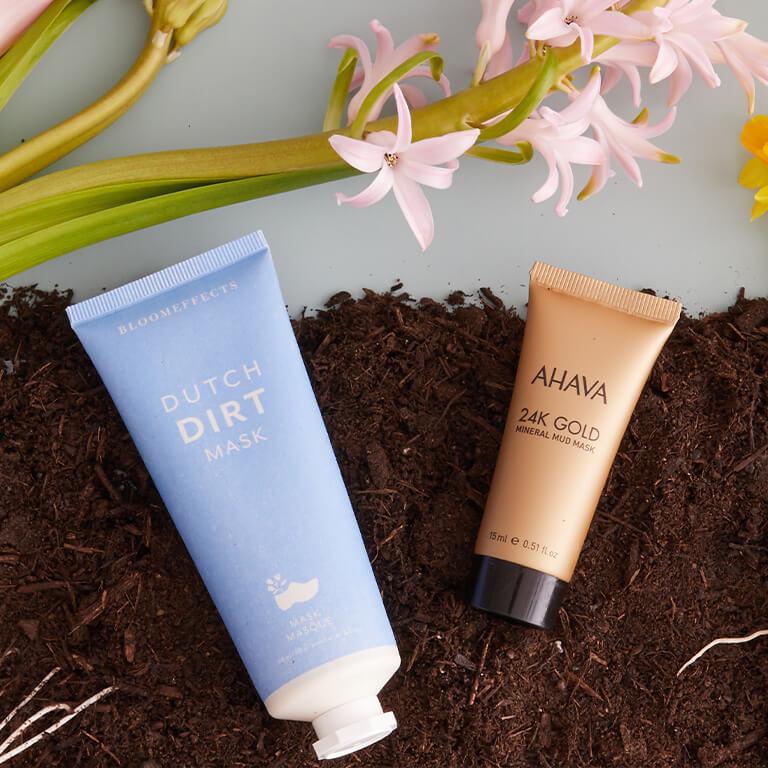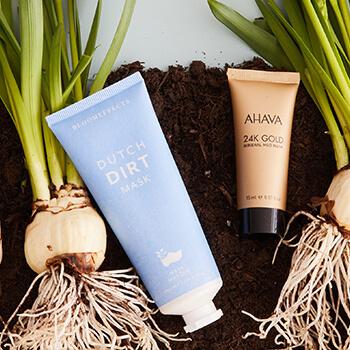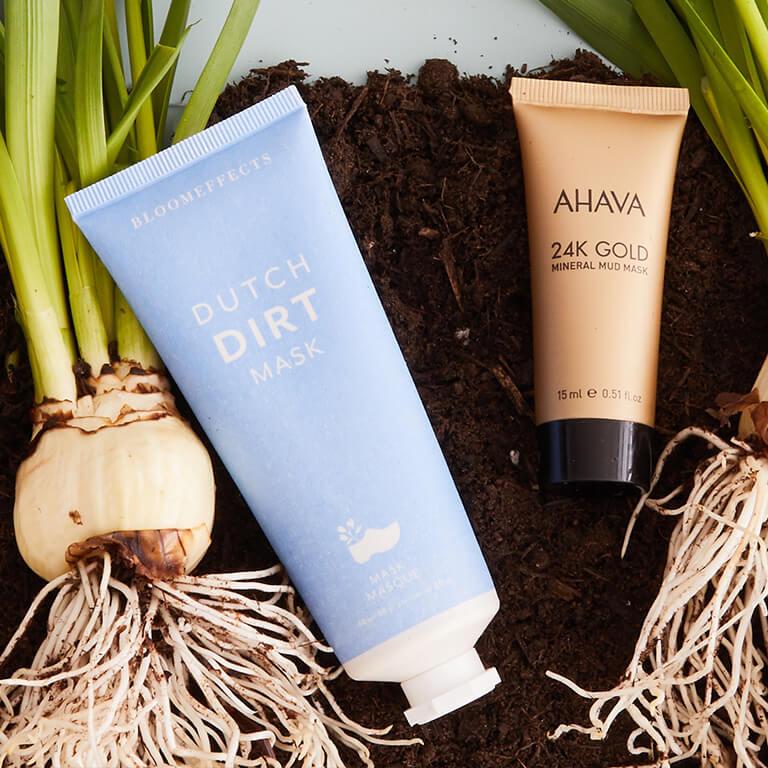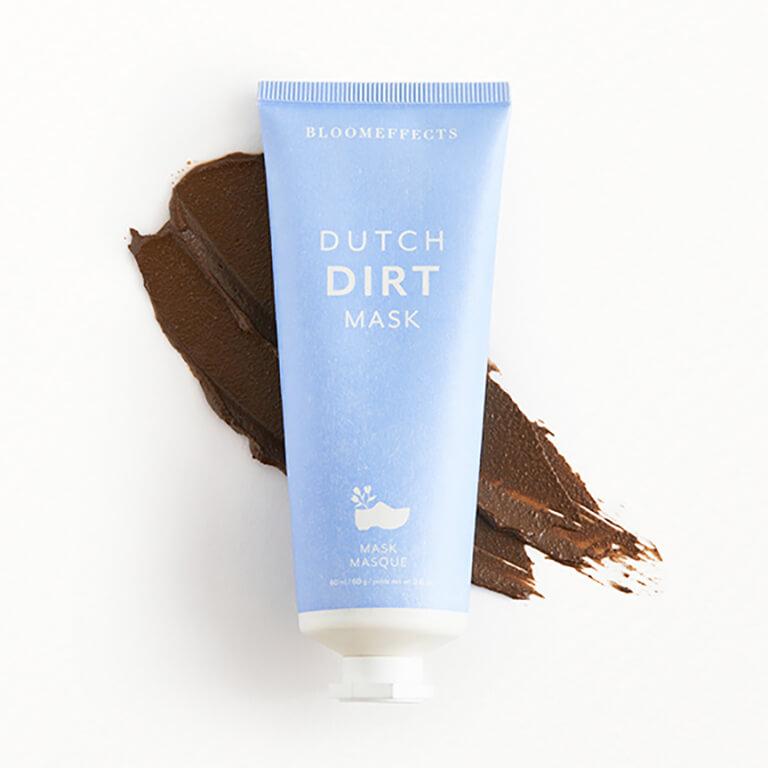7 Clay Masks Benefits: Your Skin Loves Them—Here's Why



Pia Bhattacharya


Our love for clay face masks goes way, way back (fun fact: Queen Cleopatra used Dead Sea mud to deep clean her skin), and thanks to their neverending benefits—including being perfect for #maskselfies—our relationship with clay masks remains strong. From detoxifying pores and absorbing oils to fighting acne, there are clay mask benefits for every age and skin type. But before you hit up the skincare aisle, here’s everything you need to know about clay mask benefits for your skin, with tips from NYC-based board-certified dermatologist, Dendy Engelman, MD.




It's about glam time you treated yourself.
But first, what are clay masks made of?
There are so many types of clay masks—each with their own color, texture, mineral composition, and benefits. A few popular ones you’ll find are bentonite clay, kaolin clay, and French green clay. Bentonite clay is made from volcanic ash (cool, right?) and is great for most skin types, especially oily and acne-prone. Kaolin clay is one of the mildest (and it’s often pink!) and it's perfect for sensitive skin types. French green clay can have anti-aging benefits, plus it helps reduce inflammation and boost circulation. Now that you’re up to speed, let’s dive into the benefits of adding a clay face mask to your skincare routine.
1. It’s a magnet for the bad stuff
Your skin meets dirt, oils, and bacteria on a daily basis—and while exfoliating is essential to clearing them away, adding a clay mask to your skincare routine a few times a week can really up the ante. Quick science lesson: Clay masks are made from negatively-charged molecules, and most toxins are made of positively-charged molecules. This means that clay mask molecules bind themselves to toxins deep in your pores, bring them to the surface, and lift them away. When you use clay masks regularly, clogged pores won’t stand a chance.
Pro Tip: “Clay needs to come in physical contact with impurities in order to soak them up, so the longer a product sits on your skin, the more effective it's going to be,” says Dr. Engelman. “However, that doesn’t mean to leave it on for 24 hours. Stick to the product’s recommended time, or when you start to feel tightness from the mask.”
2. It brightens you up overall
One clay mask benefit we can all get behind: glowier skin. When dead skin cells pile up on your skin’s surface it can give your complexion a dull, uneven appearance. Clay masks remove dead skin cells and keep them from accumulating in the first place. The result? An even and brighter complexion, and a smoother surface for makeup application.
Pro Tip: Want to up your glow? “Look for a mask with clay and a chemical exfoliant, such as lactic acid. This will help clarify your skin and gently remove dead skin cells, resulting in a brighter complexion,” Dr. Engelman says.


We suggest: For a mask that clears your pores and gets you glowing, try BLOOMEFFECTS Dutch Dirt Mask—it’s made with hyaluronic acid to maintain moisture (key to keeping your skin hydrated, dewy, and bright), and a unique Dutch Tulip Complex that softens, smooths, and protects with antioxidants.
3. It’s a great acne fighter
With breakouts come redness, irritation, and a healthy dose of frustration. Applying a clay mask to a new breakouts is not only super soothing and satisfying, it can help remove acne-causing bacteria to get them under control. As it detoxifies your pores, a clay mask removes bacteria to prevent future breakouts, while clearing it from your skin’s surface to prevent it from entering. Whether you’ve got acne-prone skin, or battle the occasional blemish, clay masks can help you see clearer skin days ahead.
4. It balances oils
While clay masks can benefit every skin type, they’re super helpful for oily skin thanks to their oil-absorbing powers. All clay masks nix shine, but ones made with kaolin clay, or white clay are extra gentle (great if your skin’s on the sensitive side). Like everything, practice restraint. Absorbing too much oil can actually cause your skin to overcompensate, kicking your skin’s sebum production into overdrive (cue: vicious cycle).
Pro tip: Got oily or combination skin? Dr. Engelman suggests multimasking, or using a clay mask where you need it. “I like focusing on the T-zone and avoiding dry areas such as the apples of your cheeks or areas with thin skin like lips and around the eye.”
5. It boosts circulation
Clay masks, especially ones made with bentonite clay (one of the most popular types), can help boost blood circulation beneath your skin, and oxygen circulation to your skin cells. This helps your skin heal and regenerate, improves collagen production, and gives it a brighter, more youthful appearance.
6. It refines pores for smoother skin
Pores—everyone’s got them, we’d love to embrace them, but sometimes they can appear larger than usual (especially when they’re clogged), which can make your skin feel less smooth. One clay mask benefit we love is clay’s ability to tone up your pores and refine them. The result? Smoother, softer texture and more even skin tone. Bonus: Applying foundation after a clay mask means it’ll blend like a dream.


We suggest: AHAVA 24K Gold Mineral Mud Mask—it preps your skin for flawless makeup with Dead Sea mud that cleanses and refines pores, plus 24K gold for instant luminosity.
7. It’s easy to apply & remove
There’s a reason clay masks are probably one of the first we tried as tweens—they’re some of the simplest to use (and come in really fun colors, tbh). Just start with clean skin, smooth it on all over, enjoy your Insta-scroll, and remove once it’s dry.
Pro Tip: “To remove clay masks, use a wet towel soaked with warm water, followed by an oil-based cleanser to remove any residue,” says Dr. Engelman. “Finish with a hydrating moisturizer to avoid overproduction of oil.”
Let us know if you add clay masks to your skincare routine @IPSY #IPSYCelebrateYou
P.S. Want in on all the Glam Bag fun? Take the beauty quiz now to get started. And don’t forget to check us out on Instagram and Twitter @IPSY.
Liked this post? Share!
Related Stories


Skin
How to Adjust Your Skincare Routine for Mature Skin in the Winter
Published on Dec 4, 2025 • 7 min read


Skin
Meet the Best Moisturizers for Winter, According to Dermatologists
Published on Dec 1, 2025 • 9 min read


Skin
What Is Inflammaging—and Why Everyone’s Talking About It
Published on Dec 1, 2025 • 8 min read


Skin
6 Skincare Trends to Have on Your Radar in 2026, According to Experts
Published on Dec 1, 2025 • 7 min read


Skin
We Grabbed Our Crystal Ball and Found These 6 Skincare Predictions for 2025
Published on Dec 10, 2024 • 7 min read


Skin
Simple Self-Care Tips That Actually Make a Difference
Published on Nov 13, 2025 • 12 min read


Skin
These 9 Face Scrubs Will Unlock Soft and Smooth Skin on Contact
Published on Nov 5, 2025 • 10 min read


Skin
10 Thanksgiving Foods That Will Have Your Skin Coming Back for Seconds
Published on Oct 15, 2025 • 7 min read


Beauty Picked Just for You
Get 5 products worth up to $70
Plus exclusive access to epic deals up to 80% off
Starting at just $14/month. Cancel anytime.